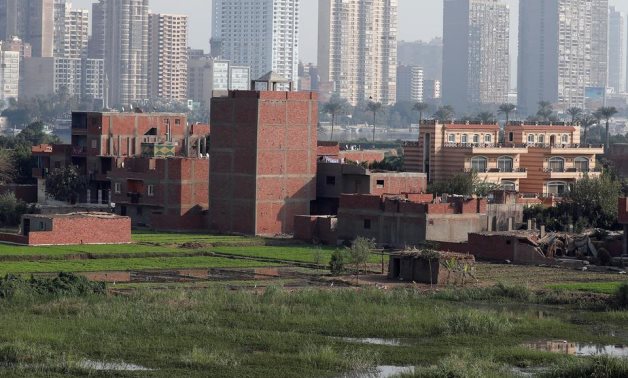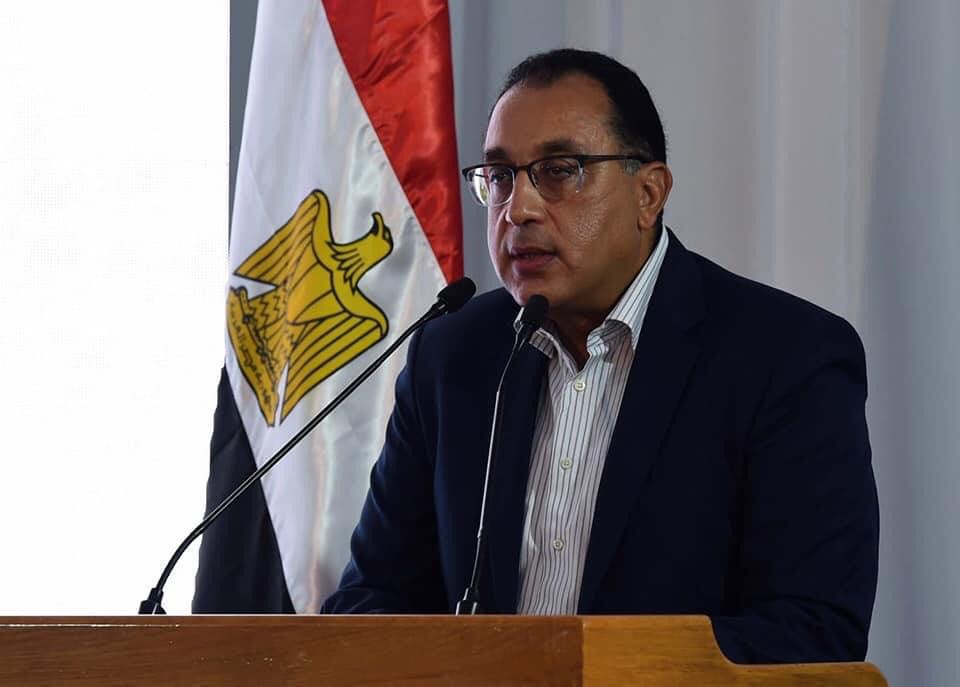
FILE- A view of houses and farmland on an island on the River Nile in front of high-rise buildings in Cairo, Egypt, November 25, 2018. Picture taken November 25, 2018. REUTERS/Amr Abdallah Dalsh
CAIRO – 12 September 2020: Along the Shubra-Banha agricultural road from Cairo to al-Mahala al-Kobra city, Gharbia governorate [Egypt’s Delta], the travelers would miss aesthetic views of the massive lands cultivated with cotton, rice, and clovers, to find instead many buildings that cut several pieces of land and turned them into non-arable lands.
Egypt Today made on Thursday a trip from Cairo to Mahala al-Kobra and found dozens of buildings on agricultural plots, which damaged the aesthetic views of the massive farmlands along the agricultural road. Many owners already built extended family houses and villas, while others made demarcation of plots of lands with stones in preparation for constructions.
Although violations of buildings on agricultural lands have occurred for many decades, the rate of illegal construction speeded up because of the security vacuum that had been caused following the January 2011 Revolution.
Egypt has lost more than 400,000 feddans (one feddan equals about 1.038 acres) over 40 years, including 90,000 feddans since 2011 due to encroachment activities on the agriculture lands, announced Egyptian Prime Minister Mustafa Madbouli in his meeting with a number of Egyptian editors-in-chief and reporters in Kafr Saad, Qalyoubia governorate on Saturday.
“We need LE 18 billion (US$ 1.1 billion) to recultivate these 90,000 feddans. The cost of recultivating one feddan after random construction ranges from LE150,000 to LE200,000,” revealed Madbouli, adding that dealing with violations to stop the massive bleeding of one of the country’s most important wealth is a must.
Madbouli noted that the government has registered 2 million cases of building on the farmlands since 2011. “We know that the decision of putting an end to random construction is not acceptable to the street [common people], but it is in the interest of the citizen. We will not allow building on a new piece of agricultural land,” Madbouli said.
Putting into consideration the living conditions in the rural areas, the Prime Minister said that President Abdel Fattah El Sisi directed the government to set the minimum price for a one-meter square at 50 EGP when it comes to reconciliation. The government has allocated LE 13 billion to develop 375 rural communities nationwide. He added that there will be a deduction of 25% in prices if the owner accelerated the legalization of the situation.
“Construction [on farmlands] causes a food crisis for 100 million citizens. We will deal decisively with any attempt of encroachment," Madbouli said.
Egypt’s agricultural lands cover 10 million feddans in 2015, compared to 9.6 million feddans in 2010, the Central Agency for Public Mobilization and Statistics (CAPMAS) noted in a report issued on September 19, 2016.
According to World Bank data, Egypt’s agricultural areas on the country’s whole land increased to 3.6 percent in 2015, compared to 2.6 percent in 1961.
The government started taking action against this phenomenon in January 2018, when Egypt’s House of Representatives approved new amendments to the Agriculture Law, imposing tougher penalties on building on arable land.
Encroachments include illegal construction on the Nile banks and arable lands, unlicensed fish farming, and disposal of industrial waste as well as other forms of pollution.
In his speech at the meeting with the journalists, Qalyoubia governor Abdel-Hamid al-Haggan said that the encroachment cases on the agriculture lands in the governorate reached more than 6,000 since 2011, causing a decline in farmland with 160,000 feddans.



Comments
Leave a Comment